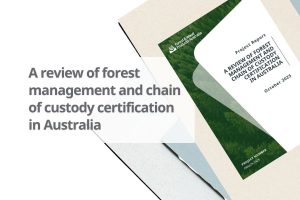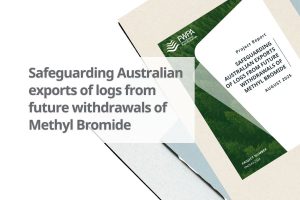Opportunities for Australian forest growers from the development of a biorefinery and/or biomaterials industry within Australia.
The options available to the forestry industry to develop biorefineries are limited in the current environment of low prices for forest products delivered for export or to saw mills or paper mills. The move toward biorefineries will require a whole-of-value chain approach. This will need to be brokered at all levels of government and industry. There are significant opportunities for Australian forestry and chemicals industries to collaborate to develop sustainable models of integration across the value chain from biomass growing to end-user products. It is unlikely the industry will develop in isolation and without government assistance.
There are a number of examples where wood or lignocellulosic biomass is being utilised in small to large-scale biorefineries to produce biofuels, biochemical and bio-based materials. However, there are a number of areas requiring research and development for the creation of successful biorefineries. However, with the exception of the areas directly related to growing, harvesting (including aggregation and densification) and transporting most of the research, development and innovation in the creating biorefineries will and needs to occur further down the value chain. The question does arise as to the appetite of the forest grower’s to participate in such options. Arguably it is unlikely a biorefinery industry will develop without greater co-ordination and investment across the value chain in Australia. Forest biomass in Australia is currently above prices being paid for equivalent resources internationally and new business models providing benefits for foresters will need to be developed.
The development of the value chain from biomass to speciality chemicals has now become an area of intense study, research, development and publications. The sources and amounts of information available are vast. The challenge is to be able sift through the volumes of data, research and recommendations. However, the Commonwealth Government through DIISRTE, the International Energy Agency (IEA) and the USA Department of Energy have produced a number of reports and undertaken a vast number of studies over the past 10 years that a easily accessible.
View related webinar via this link.
Reference Number:
PRC307-1213


